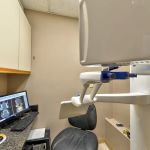- 1-Understanding-Oral-Bacterial-Infection
- 2-Common-Signs-in-Adults
- 3-Detailed-Symptoms-Explained
- 4-Risks-if-Left-Untreated
- 5-Real-Life-Case-Studies
- 6-Prevention-and-When-to-See-a-Dentist
1. Understanding Oral Bacterial Infection
Oral bacterial infection is a common yet often overlooked health issue among adults. The human mouth hosts billions of bacteria, many of which are harmless or even beneficial. However, when harmful bacteria multiply uncontrollably, they can cause infections that affect the gums, teeth, and other tissues in the oral cavity. These infections are not just minor annoyances; if left untreated, they can lead to serious complications such as tooth loss, systemic infections, or worsening gum disease.
The concept of oral bacterial infection involves a complex interplay between bacteria, oral hygiene, immune response, and sometimes lifestyle factors such as diet and smoking. Adults may encounter oral infections due to poor dental care, underlying health issues, or even stress that weakens immune defenses. Recognizing the early signs and symptoms is crucial because prompt action can prevent irreversible damage.
In this article, we will explore the most common signs of oral bacterial infection in adults and symptoms explained in detail. Understanding these will empower you to identify potential problems early. For those looking for professional advice or effective treatments, Dentistry Toothtruth offers reliable guidance and products tailored to oral health needs.
2. Common Signs of Oral Bacterial Infection in Adults
Adults experiencing oral bacterial infections often notice several telltale signs. One of the earliest is persistent bad breath (halitosis) that doesn’t improve with brushing or mouthwash. This happens because bacterial waste products produce foul odors. Another common sign is gum inflammation, which may present as redness, swelling, and tenderness, especially when brushing or flossing.
Bleeding gums are another major warning sign. If your gums bleed regularly during routine dental care, it’s often an indication of infection or developing periodontal disease. Sensitivity or discomfort around certain teeth could also signal bacterial invasion into deeper tooth structures. Additionally, the presence of white or yellowish plaques on teeth or gums indicates bacterial colonies forming biofilms, which are difficult to remove without professional cleaning.
Some adults report a metallic or bitter taste in their mouth, which is linked to the metabolic byproducts of harmful bacteria. Pain while chewing or even spontaneous toothaches might develop as the infection advances. Noticing these common signs early can lead to timely dental consultation and effective treatment.
3. Detailed Symptoms Explained
To fully grasp the impact of oral bacterial infection, it is helpful to break down the symptoms into categories and explore what they reveal about the infection's progression.
3.1 Gum Changes
Healthy gums are usually pale pink and firm. When bacteria proliferate, gums may become inflamed—a condition called gingivitis. This is characterized by puffiness and a shiny appearance. As the infection worsens, gums may recede, exposing tooth roots and increasing sensitivity.
3.2 Tooth Issues
Bacteria can cause cavities (dental caries) by producing acids that erode enamel. This leads to tooth decay, visible as brown or black spots. Infected teeth may develop abscesses, which are pus-filled pockets causing intense pain and swelling. This stage requires immediate dental care to avoid spreading the infection.
3.3 Systemic Symptoms
In some cases, oral bacterial infections may cause fever, swollen lymph nodes, or general malaise, indicating the infection is affecting the body beyond the mouth. Though less common, this highlights the importance of early detection.
4. Risks if Left Untreated
Ignoring signs of oral bacterial infection can lead to serious health consequences. Chronic gum disease (periodontitis) can cause irreversible damage to bone structures supporting teeth, resulting in tooth loss. Furthermore, bacteria from the mouth can enter the bloodstream, increasing the risk of cardiovascular diseases, diabetes complications, and respiratory infections.
For example, studies have shown links between poor oral health and heart disease, emphasizing how oral infections are not isolated issues but part of overall health. In rare cases, untreated abscesses can lead to life-threatening infections requiring hospitalization.
Addressing symptoms early with professional intervention and maintaining oral hygiene are critical steps to prevent these outcomes.
5. Real-Life Case Studies
Consider the story of Mark, a 45-year-old who ignored his bleeding gums and occasional tooth pain for months. He assumed it was due to brushing too hard but eventually developed a painful abscess that required emergency dental treatment and antibiotics. His case highlights how common symptoms of oral bacterial infection in adults can escalate quickly if not addressed.
Another example is Sarah, who noticed persistent bad breath and gum sensitivity but felt embarrassed to seek help. After visiting Dentistry Toothtruth, she received a thorough cleaning and personalized care plan, which resolved her symptoms and restored her confidence. These real-life experiences illustrate that awareness and timely care can prevent complications.
6. Prevention and When to See a Dentist
Prevention is the best defense against oral bacterial infections. Maintaining daily oral hygiene—brushing twice, flossing, and using antimicrobial mouth rinses—significantly reduces harmful bacteria. Regular dental check-ups, at least twice a year, enable early detection of problems before symptoms worsen.
It’s important to recognize when to seek professional help. Persistent bleeding gums, bad breath that doesn’t improve, tooth pain, or visible changes in gum appearance should prompt a dental visit. Early treatment not only resolves infections but also prevents the spread of bacteria and costly procedures.
For those uncertain about symptoms or seeking effective oral care products, Dentistry Toothtruth provides expert recommendations tailored to adult oral health challenges. Access to quality dental products and trusted services can make a significant difference in maintaining a healthy mouth.







 Sony Thomas, DDS Arcadia Endodontics4.0 (8 review)
Sony Thomas, DDS Arcadia Endodontics4.0 (8 review) Dr. John P. Alley, DDS5.0 (3 review)
Dr. John P. Alley, DDS5.0 (3 review) Guerra Dental4.0 (293 review)
Guerra Dental4.0 (293 review) Dr. Joseph V. Esposito, DDS0.0 (0 review)
Dr. Joseph V. Esposito, DDS0.0 (0 review) The Modern Endodontist: Yarah Beddawi DDS | Root Canal Specialist in Mountain View and Los Altos4.0 (200 review)
The Modern Endodontist: Yarah Beddawi DDS | Root Canal Specialist in Mountain View and Los Altos4.0 (200 review) Growing Smiles of Voorhees4.0 (2464 review)
Growing Smiles of Voorhees4.0 (2464 review) The Importance of Oral Health Education During Pregnancy for a Healthy Pregnancy
The Importance of Oral Health Education During Pregnancy for a Healthy Pregnancy Best Tips for Brushing Your Teeth Properly for Healthy Gums: Essential Techniques for Oral Health
Best Tips for Brushing Your Teeth Properly for Healthy Gums: Essential Techniques for Oral Health Why Skipping Dental Checkups Can Lead to Bigger Oral Health Problems
Why Skipping Dental Checkups Can Lead to Bigger Oral Health Problems Advantages of Porcelain Dental Restorations
Advantages of Porcelain Dental Restorations How Can Diabetes Cause Tooth and Gum Problems? Preventing and Managing Oral Health Issues
How Can Diabetes Cause Tooth and Gum Problems? Preventing and Managing Oral Health Issues Healthy Habits for Promoting Good Oral Health and Hygiene: Tips for a Healthy Smile
Healthy Habits for Promoting Good Oral Health and Hygiene: Tips for a Healthy Smile